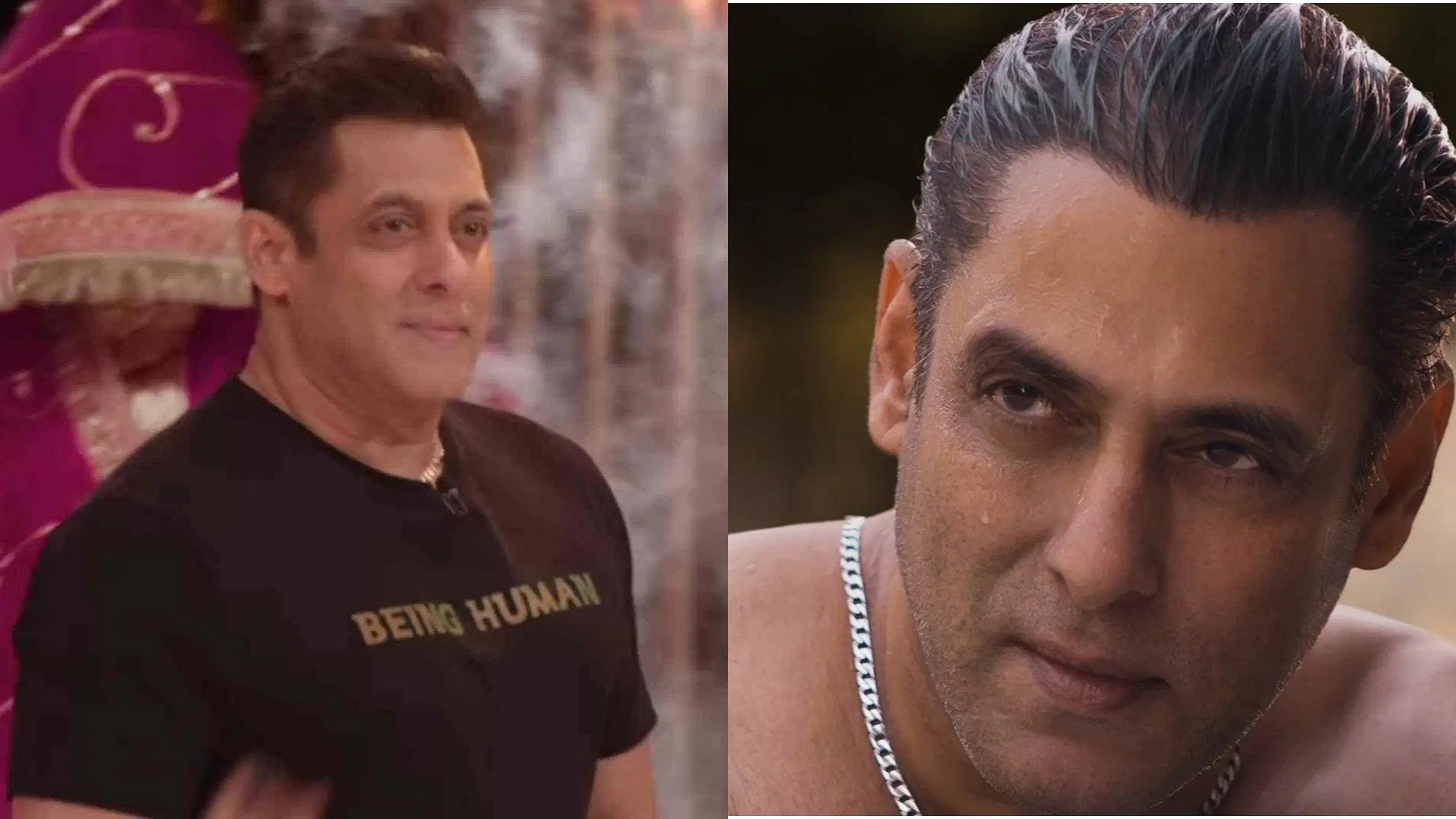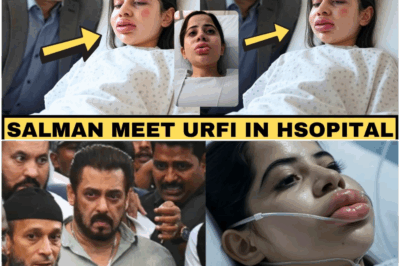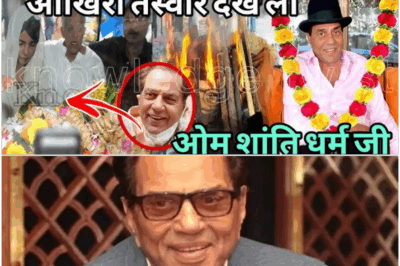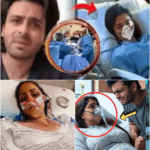Salman has 2 serious diseases, anything can happen at any time | Salman Khan Fighting Deadly Disease.
.
.
.
Superstar Salman Khan’s Battle with Deadly Diseases: Trigeminal Neuralgia, Brain Aneurysm, and AVM
Mumbai, June 24, 2025 — Bollywood’s quintessential action hero and fitness icon Salman Khan has stunned fans by revealing that he is silently fighting not one, but two life-threatening neurological conditions. In a candid appearance on The Kapil Sharma Show, the 58-year-old superstar disclosed that years of grueling stunts, intense workout regimens, and the sheer wear-and-tear of action cinema have taken a hidden toll on his health. Despite enduring trigeminal neuralgia, a brain aneurysm, and an arteriovenous malformation (AVM), Salman continues to perform death-defying leaps, choreographed fight sequences, and gravity-defying dances that cement his status as Bollywood’s enduring powerhouse.
This in-depth article explores the nature of Salman Khan’s medical conditions, the treatments he has undergone, the impact on his professional and personal life, and the broader conversation it sparks about health, fitness, and the price of action-star stardom.

From Box-Office Titan to Health Crusader
Salman Khan, whose career spans over three decades and more than 100 films, has long been synonymous with physical prowess. His trademark bulging biceps, sculpted abs, and effortless charisma have inspired millions to emulate his rigorous workout routines. Fitness magazines have chronicled his High-Intensity Interval Training (HIIT) sessions, martial arts drills, and specialized diet plans that combine lean proteins, complex carbohydrates, and micronutrient-rich vegetables.
Yet, behind the camera and far from the celebratory cheering of multiplex audiences, Salman’s body has quietly borne the cumulative effects of:
Repeated high-impact stunts (wiring sequences, high-altitude jumps, and vehicular chases)
Prolonged shoot schedules (often 16-hour days across multiple locations)
Intense dance rehearsals (syncopated choreography requiring core stability and joint flexibility)
It was on May 30, 2025, during the taping of The Kapil Sharma Show, that Salman first broke his silence. With characteristic candor, he told host Kapil Sharma:
“We work so hard for decades. Bones crack, ribs fracture, and yet we get up and keep fighting. But I’ve learned the hard way that the body has limits you cannot ignore.”
He went on to name the specific ailments that have dogged him for years: trigeminal neuralgia, brain aneurysm, and arteriovenous malformation.
Understanding Trigeminal Neuralgia: “The Suicide Disease”
Often dubbed the “suicide disease,” trigeminal neuralgia (TN) is a chronic pain condition that affects the trigeminal nerve—the fifth cranial nerve responsible for facial sensation and motor functions such as chewing. Key characteristics include:
Intense, electric-shock-like pain in one side of the face
Trigger points around the mouth, cheek, or jaw where a gentle touch or breeze can precipitate agony
Brief episodes lasting seconds to minutes, but recurring hundreds of times a day
Impact on daily life, as simple actions like brushing teeth, talking, or applying makeup can become excruciating
Salman Khan first experienced symptoms of TN around 2007, during the shoot of Partner. Colleagues noticed him suddenly wince mid-action scene, rubbing his cheek in pain, only to soldier on through takes. For nearly four years, he reportedly battled the condition in silence, seeking relief through:
-
Medication: Anticonvulsants such as carbamazepine and gabapentin to dampen nerve hyperactivity.
Nerve blocks: Infra-orbital or mandibular injections to interrupt pain signals.
Physical therapy: Facial muscle exercises and stress-reduction techniques (yoga, meditation).
In 2011, unable to manage the relentless pain, Salman traveled to the United States for advanced consultations. There, he underwent microvascular decompression (MVD)—a surgical procedure that relieves pressure on the trigeminal nerve by repositioning or removing offending blood vessels. Post-operation, he credited the surgery with restoring his ability to smile, speak, and perform without flinching, though he cautioned that recurrence remains a possibility.

The Hidden Threat of Brain Aneurysm
While TN wreaked havoc on his facial nerves, Salman Khan’s second disclosed condition—a brain aneurysm—posed an even more ominous risk. A brain aneurysm occurs when a blood vessel wall weakens and balloon-like pouches form, creating the potential for:
Rupture: Leading to hemorrhagic stroke, permanent neurological damage, or death
Subarachnoid hemorrhage: Blood seeping into the space around the brain, causing sudden headaches (“thunderclap headaches”), nausea, vomiting, and loss of consciousness
Silent growth: Many aneurysms remain asymptomatic until they reach a critical size or leak
Salman revealed that routine medical scans in 2019 detected a small, saccular aneurysm on a cerebral artery. According to his medical advisors, the aneurysm’s size remained just under the threshold that mandates immediate surgical clipping or endovascular coiling. Instead, he was placed on a strict regimen of:
Blood pressure management (beta-blockers and ACE inhibitors) to reduce stress on vessel walls
Regular MRI/MRA monitoring every six months
Lifestyle adjustments: Avoidance of heavy lifting, extreme exertion, and stress
Despite these precautions, Salman admitted that the aneurysm often weighed on his mind during action sequences:
“Every time I jump from a rooftop or face a speeding car, there’s a voice in my head reminding me of the aneurysm. But the show must go on.”
Medical experts caution that untreated aneurysms larger than 7 millimeters carry a 25-50% risk of rupture over five years. Salman’s decision to defer intervention reflects a calculated balance between his passion for performance and safeguarding his life.
AVM: The Third Invisible Adversary
Adding to Salman’s health challenges is a diagnosis of arteriovenous malformation (AVM)—an aberrant connection between arteries and veins in the brain that bypasses the capillary system. AVMs can lead to:
Intracranial hemorrhage: Rupturing of fragile vessels
Seizures: Electrical disturbances in brain tissue
Neurological deficits: Weakness, sensory changes, speech impairment
Salman disclosed that he learned of his AVM during a comprehensive neurological evaluation in 2022. Though asymptomatic at first, he began to experience:
Intermittent headaches (not unlike tension headaches, but more severe)
Momentary lapses of balance during dance rehearsals
Visual disturbances (blurring, floaters) after long shooting days
His treatment plan includes:
-
Stereotactic radiosurgery (Gamma Knife) to target and obliterate the malformed vessels
Antiepileptic drugs to prevent seizures
Ongoing neurosurgical consultations to assess whether surgical resection becomes necessary
AVMs carry a 2-4% annual risk of rupture, with a mortality rate of up to 10% per hemorrhage. Salman’s willingness to undergo high-precision, non-invasive radiation therapy illustrates his commitment to proactive care.

Despite the Odds: Salman’s Unbroken Spirit
What makes Salman Khan’s revelations particularly striking is the contrast between his on-screen bravado and the private vulnerabilities he now shares with the world. His upcoming film, Final Cut, is slated to feature some of his most daring stunts yet—rooftop chases, vehicular smash-ups, and gravity-defying leaps. To accommodate his medical conditions, the production team has instituted:
On-set medical supervision: A neurosurgeon and neurologist are on standby during action sequences.
Modified stunt choreography: Reducing direct impact on the head and face, using advanced harnesses and wire rigs.
Recovery protocols: Ice baths, physiotherapy sessions, and scheduled rest periods.
Salman remains undeterred: “I’ve faced injuries before—broken ribs, sprained ankles, torn ligaments. But this? It’s a mental battle. When you know every choreographed punch or fall could trigger an aneurysm or AVM bleed, you learn to trust your team, your discipline, and above all, your faith.”
Industry and Fan Reactions
News of Salman Khan’s health crusade has set off a wave of empathy and admiration across Bollywood and social media:
Fellow actors like Shah Rukh Khan, Akshay Kumar, and Ranveer Singh have publicly praised Salman’s courage, emphasizing the importance of health over heroics.
Directors and producers have commended his professionalism for calling attention to safety measures on high-risk shoots.
Fans launched the hashtag #SalmanStrong, sharing personal stories of their own battles with chronic illness and drawing inspiration from his resilience.
Notably, Kamal Haasan—Salman’s co-star in the upcoming Final Cut cameo—offered to postpone shooting if Salman needed extra time. “Health first,” Haasan tweeted. “Cinema can wait; life cannot.”
Medical Expert Perspectives
To shed further light on Salman’s conditions, Bollywood Health Weekly consulted two leading specialists:
-
Dr. Meera Deshpande, Neurosurgeon at Apollo Hospital, Mumbai
“Trigeminal neuralgia, aneurysms, and AVMs each carry significant morbidity. Simultaneous management of all three in a high-stress, stunt-driven lifestyle is rare. Mr. Khan’s multidisciplinary approach—combining medication, minimally invasive procedures, and regular imaging—is exemplary.”
Dr. Arvind Bhaskar, Neurologist at Tata Memorial Centre
“Salman’s transparency helps destigmatize neurological disorders. Millions avoid medical care out of fear. By speaking out, he encourages early detection, adherence to treatment, and open dialogue.”
Both experts underscore that preventive care, stress management, and regular check-ups are critical—not only for celebrities but for anyone at risk of vascular or neural disorders.
A Turning Point for Bollywood’s Safety Culture
Bollywood has long been criticized for lax safety protocols during action shoots, with numerous reports of on-set accidents, equipment failures, and inadequate medical support. Salman Khan’s disclosure arrives amid calls for industry reforms:
Standardized on-set medical teams for all major productions
Mandatory safety audits of stunt sequences by certified coordinators
Insurance policies covering cast and crew for neurological and bodily injuries
The Film and Television Producers Guild has already initiated discussions on drafting a “Stunt Safety Code,” to be ratified later this year. Salman’s case is a poignant reminder that even the most seasoned performers remain vulnerable without robust safeguards.
Beyond the Screen: Salman’s Message of Hope
In the final segment of his Kapil Sharma Show revelation, Salman took a reflective tone:
“At the end of the day, these are Allah’s tests. I’m grateful I can work, I can dance, I can love my fans. But I’ve learned never to take health for granted. If I can inspire one person to get a check-up or heed a doctor’s advice, then sharing all this was worth it.”
He concluded by thanking his family—mother Salma Khan, father Salim, brothers Arbaaz and Sohail—and his daughter Zoya for their unwavering support. Notably, his co-stars Katrina Kaif and Pooja Hegde sent private messages of solidarity, promising to dedicate their next box-office hits to Salman’s recovery.
Looking Ahead: “Final Cut” and Beyond
As Final Cut ramps up its production schedule, Salman’s health team continues to monitor his conditions. Filming has been structured into four-week blocks, with two-week recovery intervals. Director Ali Abbas Zafar shared:
“We adjust the action to Salman’s comfort level. Sometimes we reshoot scenes with body doubles or reduce the number of takes. The goal is to tell a thrilling story without compromising anyone’s life.”
Salman has also announced plans for a documentary, tentatively titled Inside the Warrior, chronicling his journey from diagnosis to treatment, and spotlighting the broader challenges of neurological health in high-performance professions.
Conclusion: The Price of Stardom and the Triumph of Spirit
Salman Khan’s forthright admission of his battle with trigeminal neuralgia, brain aneurysm, and AVM is more than a celebrity revelation—it is a call to action on health awareness and safety culture. His ability to transform personal adversity into a platform for education and reform underscores why, despite the odds, he remains Bollywood’s beloved superstar.
In acknowledging his vulnerabilities, Salman teaches that true strength lies not in invincibility, but in courage, humility, and perseverance. As fans worldwide rally behind #SalmanStrong, one thing is clear: this is not the end of his story, but the beginning of an even more inspiring chapter—where health, heart, and heroism converge both on and off the silver screen.
play video:
News
Salman Khan Meet Urfi Javed In Hospital And Got Emotional
Salman Khan Meet Urfi Javed In Hospital And Got Emotional . . . Salman Khan Visits Urfi Javed in Hospital:…
🔴Fans and stars arrived to see Dharmendra for the last time? Did Dharmendra really die? Dharmendra health
🔴Fans and stars arrived to see Dharmendra for the last time? Did Dharmendra really die? Dharmendra health . . ….
🔴Where will Dharmendra’s last rites be held? Information has come out? Dharmendra Deol death news viral?
🔴Where will Dharmendra’s last rites be held? Information has come out? Dharmendra Deol death news viral? . . . Dharmendra…
Özcan Deniz ve Asli Enver, Capadocia’daki evliliklerini yenilemeyi planlıyorlar
Özcan Deniz ve Asli Enver, Capadocia’daki evliliklerini yenilemeyi planlıyorlar. . . . Özcan Deniz ve Aslı Enver: Kapadokya’da Aşkın ve…
Gökberk Demirci’nin babası Özge Yağız’dan bahsediyor – yürekten bir açıklama
Gökberk Demirci’nin babası Özge Yağız’dan bahsediyor – yürekten bir açıklama. . . . Gökberk Demirci’nin Babasından Özge Yağız’a Yürekten Sözler:…
Mahassine Merabet ve Cenk Turan sosyal medyada hamilelik haberlerini paylaşıyor
Mahassine Merabet ve Cenk Turan sosyal medyada hamilelik haberlerini paylaşıyor. . . . Mahassine Merabet ve Cenk Turan’dan Müjde: “Küçük…
End of content
No more pages to load












